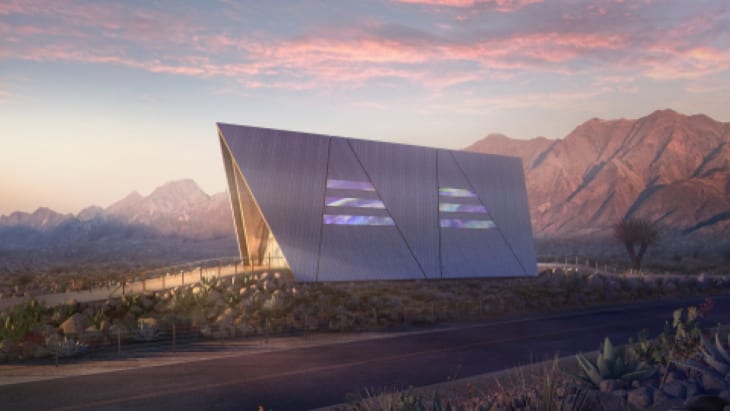The NRC’s acceptance of Centrus’ application follows a 4-0 vote by the commission on May 26 to implement a more streamlined and predictable licensing pathway for advanced non-light water reactors. The NRC on June 16 also announced it had accepted for formal review a first-of-its-kind combined license application (COL) from Oklo Power to build and operate the company’s Aurora fast reactor at the Idaho National Laboratory (INL) site in Idaho.
Centrus: HALEU Production on Schedule, NRC Review Will Wrap Up by June 2021
The milestone for Centrus is important because though it is needed by many advanced reactor concepts, and it could boost the efficiency of existing reactors, HALEU—fuel comprising U-235 enriched to a higher degree (of between 5% and 20%)—is not commercially available today, nor are any HALEU-fueled reactors in commercial operation. “The lack of available HALEU constrains the deployment of advanced reactors and advanced fuels, and vice-versa,” Centrus said earlier this year. “This is the ‘chicken and egg’ dilemma that must be resolved for the U.S. to establish itself as the global leader in building and fueling the next generation of reactors around the world, which is critical to U.S. influence on nonproliferation.”
Centrus’s application essentially requests an expansion of an existing license that the company known as U.S. Enrichment Corp. (USEC) until 2014 already holds to enrich uranium at the Department of Energy’s (DOE’s) American Centrifuge Plant in Piketon, Ohio. So far, the Piketon facility remains the only one in the U.S. that has a license to enrich uranium to a U-235 concentration of up to 10%, making it the only U.S. facility licensed for enrichment above 5%.

Created in 1992 as a government corporation to restructure the government’s uranium enrichment operations, USEC was privatized in 1998. Though it successfully demonstrated its advanced U.S. gas centrifuge uranium enrichment technology in 2013 (in a three-year project that ended in 2016) at Piketon facility, the Obama administration defunded the demonstration cascade at the American Centrifuge Plant, and it was shut down. In May 2019, however, the DOE extended the lease agreement for Centrus’s Piketon facility until May 2022, and in late October 2019, it finalized a three-year $115 million (80%-20% cost-shared) contract that allows Centrus to deploy a small cascade of 16 AC-100M centrifuges at the American Centrifuge Plant to demonstrate production of HALEU by 2022. Though the COVID-19 pandemic has limited operations at the Piketon facility, the company says it is working toward a May 2022 demonstration timeframe.
Assuming the NRC grants modifications for a commercial plant, Centrus expects to have fully licensed, operable HALEU production capability by the time the DOE contract ends. Initially, while that capability will be at “a small scale,” it could be expanded “modularly” to meet commercial or government needs for HALEU, Centrus has said. On Tuesday, the company noted the demonstration program “is on schedule and on budget, with the first set of outer casings for the centrifuges delivered to Piketon after being manufactured in Oak Ridge, Tennessee.”
In a June 23 letter to Centrus, the NRC said it plans to complete the technical review of Centrus’s two submittals by June 2021. It also estimated the review would cost about $737,000 and require about 2,650 staff hours. However, it noted that estimate does not include the NRC’s staff review of an amended physical protection plan (PSP) for the ACP HALEU cascade, which has yet to be submitted.
Oklo Application May Establish ‘Consistent Standards for Acceptance’ of Novel Reactor Designs
The NRC’s acceptance of Oklo’s COL to build a 1.5-MW Aurora micro-reactor is another big step for the Silicon Valley company, which last year received a first-of-its-kind site use permit to build its Aurora plant, a fast reactor, at an INL site, and this February, also became the first modern advanced reactor design firm to secure access to recycled nuclear fuel from INL for demonstration purposes.

But at the NRC, the acceptance also formalizes the start of a new era for nuclear regulation in the U.S. And because Oklo’s COL is the only one for a non-light-water reactor currently under NRC review, as the agency confirmed to POWER on June 25, the review process will rely on “limited precedent to establish consistent standards for acceptance,” the NRC said.
The speed at which the NRC accepted the application that Oklo submitted on March 11 is remarkable, especially because it is the first submitted of any type since 2009. Both the NRC and Oklo acknowledge that achievement stems from “pre-application” discussions that span at least four years. Oklo’s CEO and co-founder, Jacob DeWitte, also pointed to a different approach. “As a start-up, Oklo is persistently driving innovation by doing things differently. We are setting a different paradigm by challenging the current system, while getting feedback, iterating, and ultimately getting approval on things that traditionally have not been done before,” he said.
Accepting the application for review, or “docketing,” does not indicate whether the NRC will ultimately approve or reject the request for a license, the NRC noted, however. “The NRC is focusing on aligning on key design and safety aspects early in the process to provide a predictable and efficient licensing schedule.”
In a June 5 letter to Oklo, the NRC said it intends to issue a review schedule for the Aurora application within 90 days of completion of the acceptance review, and it is “committed” to completing its safety review within the established generic 36-month NRC schedule as set out by the Nuclear Energy Innovation and Modernization Act.
“To that end, the NRC staff has determined that the overall review can be completed in the most efficient manner possible by reaching alignment on key safety and design aspects of the Aurora licensing basis presented in the application before initiating a detailed review of all aspects of the design,” the NRC said. “Once alignment is achieved on these foundational aspects, as discussed below, a reliable and efficient schedule for the entire licensing review can be established.”